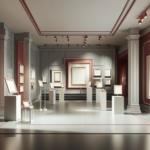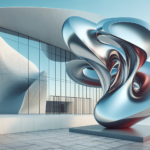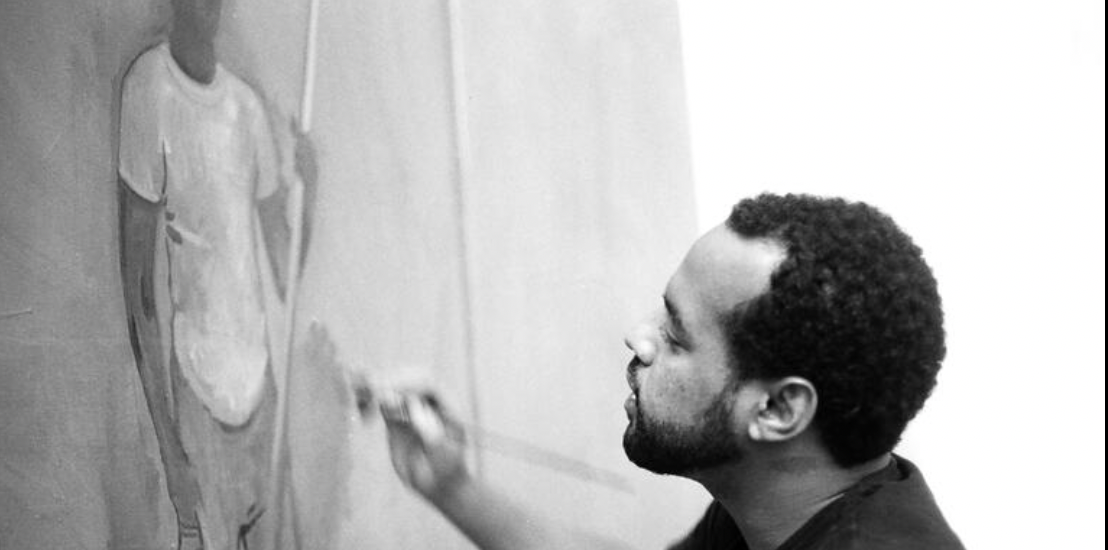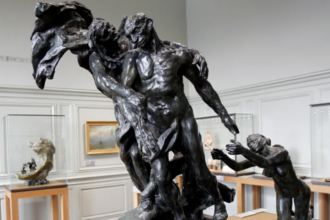Noah Davis was a painter whose simplest pieces brimmed with ideas and adventure. His work, such as the unsettling “Bad Boy For Life,” painted when he was just 24, demonstrates his unique style. In this piece, the depiction of a child being spanked by his mother conveys both a sense of normality and strangeness, a hallmark of Davis’s approach.
Another poignant painting, “The Architect,” based on a photograph of celebrated Black architect Paul Revere Williams, shows the figure explaining a model veiled with swipes of white paint. This visual interruption mimics an exploded “thinks…” bubble, representing Davis’s ability to layer meaning within his work. Davis’s prolific career was tragically cut short by his untimely death from a rare cancer.
Despite this, he left behind over 400 paintings and numerous curatorial projects. His work often depicted striking, mysterious images – a man on a unicorn on the promised but unfulfilled 40 acres for freed Black slaves, ballerinas dancing in an LA housing project, or a conductor leading an unseen orchestra. Full of humor, observation, social commentary, and autobiographical references, Davis’s pieces combine figuration and abstraction effortlessly.
Elements from Mondrian, Fellini-esque dreams, and even Robert Ryman and Rothko can be discerned in his evolving style. Davis’s artistic influences included painters Marlene Dumas, Luc Tuymans, and Peter Doig, yet his voice remained distinct and unwaveringly his own. His work absorbed elements from television, movie stills, and art history, creating art that spoke volumes about his creative intellect.
Noah Davis’s evocative artistry
One notable series, inspired by Barack Obama’s 2008 presidential campaign, featured geometric shapes representing battleground states, painted in a color mix of Democratic red and Republican blue. This innovative series, however, exists partially in memory, as only one original work survives today.
A personal highlight is “Painting for My Dad” (2011), created while Davis’s father was dying. A man stands in a rocky cleft with a kerosene lamp, looking out into the star-spangled night. In 2012, Davis and his wife Karon, a sculptor and performer, founded the Underground Museum in Los Angeles to bring culture to their predominantly Black and Latinx neighborhood.
Despite initial resistance from major museums, Davis forged ahead by recreating famous art pieces himself, resulting in the compelling “Imitation of Wealth” exhibit. This show featured works mimicking Dan Flavin, Marcel Duchamp, and Jeff Koons, among others. This exhibit, faithfully recreated at the Barbican, underscores Davis’s innovative spirit.
Helen Molesworth, then-chief curator of the LA Museum of Contemporary Art, supported Davis’s mission, allowing him to curate exhibits like William Kentridge’s “Journey to the Moon,” which blended live action with animation and fantasy. Davis’s final works, including poignant photo-collages and paintings made from his hospital bed, are testament to his enduring creativity. These pieces, including scenes of a funeral and intimate domestic moments, reflect his life’s culmination with tragic resonance.
The retrospective at the Barbican highlights the profound impact Davis had despite his brief career, reminding us of the thrilling strangeness and boundless creativity that characterized his art.















